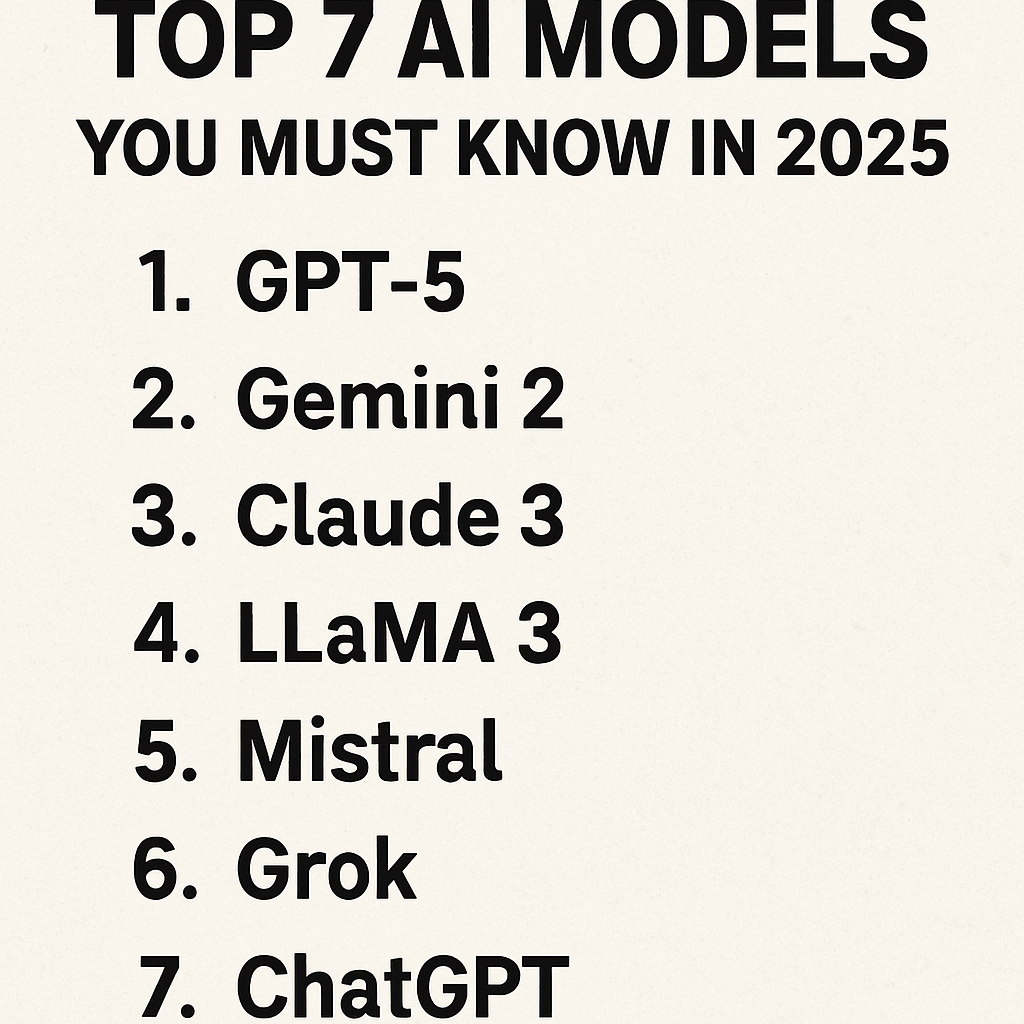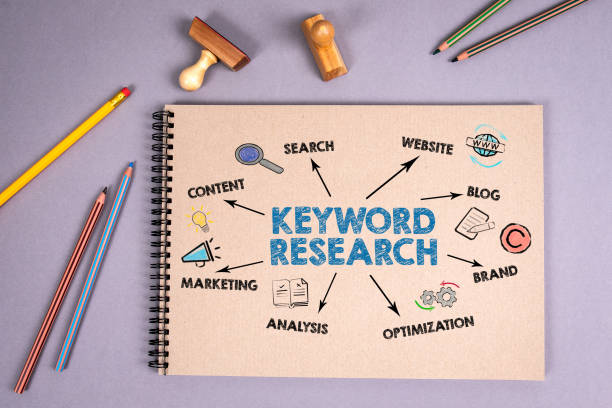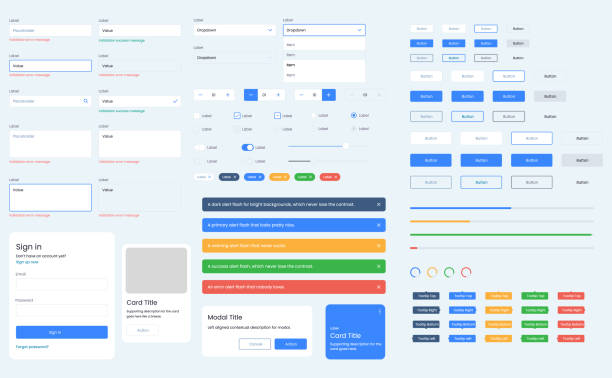Top AI Models Dominating the Market Today
Artificial intelligence is reshaping our world. It’s not just a buzzword anymore. AI models are now integral to many industries.
From healthcare to finance, AI is everywhere. These models automate tasks and provide insights. They are transforming how businesses operate.
But which AI models are leading the charge? That’s what we’re here to explore. We’ll dive into the top AI models dominating the market today.
You’ll learn about their features and applications. We’ll compare them to help you understand their strengths and weaknesses. This guide is for tech enthusiasts and professionals alike.
Whether you’re an AI researcher or a business professional, this article is for you. Discover the best AI tools and platforms available. Explore both free options and subscription-based services.
Stay ahead in the rapidly evolving AI landscape. Let’s begin our journey into the world of AI models.
What Are AI Models and Why Do They Matter?
AI models are the backbone of artificial intelligence. They mimic human intelligence by processing data to make decisions. This capability makes them crucial for automation and innovation.
These models learn from vast datasets. They identify patterns and conclude. This ability to analyze data sets them apart from traditional software.
Industries use AI models to gain insights and optimize operations. For example, in healthcare, they assist in diagnosing diseases with high accuracy. In finance, they predict market trends.
AI models also improve customer experiences. They power chatbots, which offer instant support and assistance. These models can process natural language, making interactions seamless.
Below are some key reasons why AI models are significant:
- They automate routine tasks.
- They enhance decision-making processes.
- They drive innovations across various sectors.
The importance of AI models continues to grow. With ongoing advancements, they are becoming more sophisticated. As AI technology evolves, so do its applications and benefits.
The Smartest and Most Advanced AI Models Right Now
Today’s market is filled with intelligent AI models. Each model has unique capabilities and strengths. These models are pushing the boundaries of artificial intelligence.
Let’s explore some of the most advanced AI models. These include cutting-edge systems that set the standard in their respective fields.
Two notable models are OpenAI’s GPT-4 and GPT-4o. They’re known for their expertise in deep learning for natural language processing. They have advanced capabilities in generating human-like text.
Another key model is Google’s Gemini. This model excels in language understanding tasks and problem-solving. Gemini demonstrates impressive versatility across applications.
Claude 3 by Anthropic focuses on ethical AI interactions. It strives to ensure safety and compliance. The model prioritizes human values in decision-making.
Grok from xAI is also notable. This AI model aims to enhance computational problem-solving. It offers significant improvements in specific domains like programming.
Meta’s Llama 3 emphasizes speed and efficiency. It is designed to optimize performance while reducing resource usage. This balance makes it quite practical.
Additional noteworthy AI engines include:
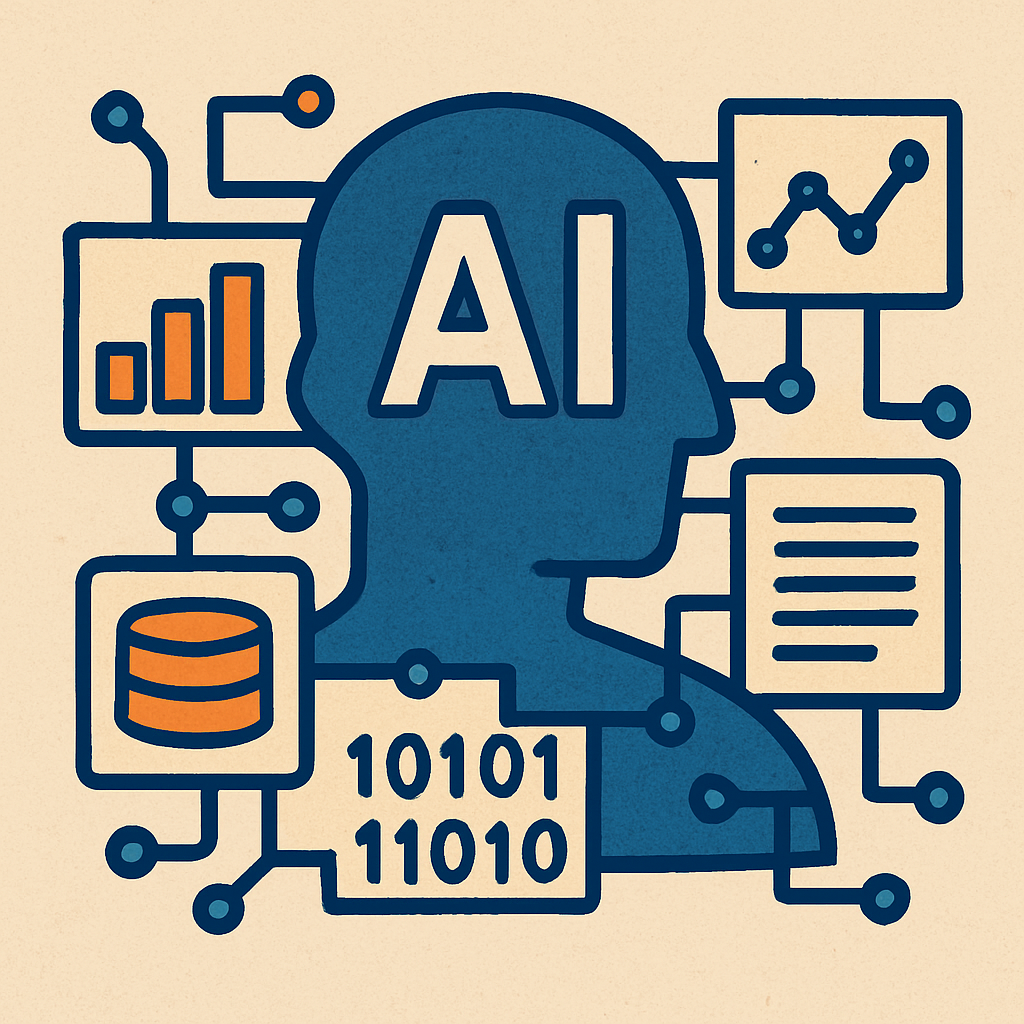
- IBM’s Watson, known for healthcare integration.
- DeepMind’s AlphaGo, famous in gaming and strategic thinking.
- Microsoft’s Azure AI provides diverse business solutions.
The advancement of these models is phenomenal. They promise to reshape how industries leverage AI. Each model contributes to a vast spectrum of applications.
GPT-4 and GPT-4o (OpenAI)
GPT-4 is OpenAI’s flagship model. It is famous for generating coherent and contextually accurate text. It builds on its predecessor with improved language capabilities.
This model’s deep learning architecture enables nuanced text interpretation. It is highly effective in creating detailed content. GPT-4 is widely adopted across various domains.
GPT-4o is an optimized version with enhanced processing capabilities. It focuses on performance efficiency and quick responses. This makes it highly suitable for real-time applications.
The features of GPT-4 models include:
- Advanced language understanding
- Contextual awareness
- High adaptability across sectors

Both models support many applications. They range from content creation to technical problem-solving. Their adaptability is one of their primary strengths.
These models continually improve through updates. They remain at the forefront of AI research. OpenAI’s commitment to innovation drives their development.
Gemini (Google DeepMind)
Gemini is a notable AI model developed by Google DeepMind. It excels in language processing and complex problem-solving. This model showcases Google’s AI prowess.
What sets Gemini apart is its adaptability. It handles a wide variety of tasks with finesse. This makes it a versatile tool in Google’s AI ecosystem.
Key features of Gemini include:
- Multilingual processing capability
- Strong problem-solving skills
- Integration with Google’s AI services

Gemini’s advanced algorithms enable seamless task execution. This capability is especially valuable in data-rich environments. It enhances efficiency and productivity.
The model’s versatility spans different sectors. It is applicable in fields like finance and healthcare. Gemini’s impact on AI research continues to grow.
Claude 3 (Anthropic)
Claude 3 is developed by Anthropic with a focus on ethical AI. It emphasizes aligning AI actions with human values. This makes it particularly unique in the market.
This model incorporates safety and compliance at its core. It prioritizes ethical considerations. This approach builds trust and reliability in AI interactions.
Important aspects of Claude 3 include:
- Ethical AI framework
- Human-aligned decision-making
- Compliance with safety standards

Claude 3 stands out for its responsible AI practices. Its design reflects a commitment to safe technology deployment. It serves as a model for future ethical AI systems.
This approach ensures Claude 3 is widely accepted. As a part of Anthropic’s offerings, it continues to evolve. The focus remains on responsible AI development.
Grok (xAI)
Grok is developed by xAI. It’s aimed at enhancing computational capabilities in focused domains. This AI model has shown rapid advancements in programming.
Its core strength lies in solving complex algorithmic challenges. This makes it particularly valuable in software development. Grok’s computational intelligence sets it apart.
Features of Grok include:
- Efficient problem-solving
- Algorithmic enhancement
- Advanced coding support

This model plays a pivotal role in technical domains. It aids developers by streamlining complex processes. Its benefits are clear in technology-driven environments.
Grok is tailored to meet specific industry needs. It reflects xAI’s commitment to innovation. This strategic focus drives its continued growth.
Llama 3 (Meta)
Llama 3 by Meta focuses on speed and resource efficiency. This model optimizes operations without compromising performance. It represents a shift towards sustainable AI.
Its design emphasizes lightweight architecture. This ensures faster processing times. Llama 3 is ideal for resource-constrained environments.
Key benefits of Llama 3 include:
- Swift processing capabilities
- Low computational footprint
- Adaptability to various applications

Meta’s Llama 3 aims for scalability. Its efficiency helps reduce computational costs. This balance makes it attractive to businesses.
The model’s speed advantages are noteworthy. It maintains high performance across diverse tasks. Llama 3’s innovation lies in its economic resource use.
Other Notable AI Engines (Watson, AlphaGo, etc.)
Several other AI engines are shaping the industry. Each brings unique strengths and specializations to AI applications.
IBM’s Watson is renowned for integrating AI into healthcare and business. Its capabilities in diagnostics and customer engagement are unmatched.
DeepMind’s AlphaGo specializes in gaming AI, particularly in strategic games. It showcases sophisticated learning algorithms. AlphaGo remains influential in AI research.
Microsoft’s Azure AI provides comprehensive business AI solutions. It offers tools for various business needs. Azure is integrated into numerous enterprise applications.
Notable AI engines include:
- Watson for healthcare insights
- AlphaGo for strategic thinking
- Azure AI for business solutions

These engines exemplify the diversity of AI applications. Each drives innovation in its niche. Their contributions to AI development are significant.
By providing specialized services, these engines expand AI’s reach. They highlight the broad scope and versatility of artificial intelligence.
Best AI Apps and Tools: Free and Paid Options
The AI landscape offers a mix of free and paid tools. Each serves different needs and applications. This section explores popular AI apps available today.
Free AI tools provide a great entry point. They are ideal for enthusiasts and beginners. These tools often offer limited yet robust capabilities.
Paid AI systems come with advanced features. They cater to professionals and businesses. Subscription-based models usually provide enhanced support and functionality.
It’s important to choose tools that align with your needs. Free tools are great for experimentation. Paid tools provide comprehensive solutions with added benefits.
AI applications extend across various industries. They can be found in education, healthcare, and finance. Each sector benefits uniquely from AI innovations.
Whether free or paid, these tools are transformative. They contribute significantly to productivity and innovation. The right tool can unlock new opportunities.
Key considerations include ease of use and scalability. It’s vital to evaluate features and support options. Picking the right tool impacts AI adoption success.

The diversity of AI tools available ensures there’s something for everyone. Exploring options is the first step toward leveraging AI power.
Best Free AI Tools and Apps
Free AI tools are plentiful and varied. They provide accessible ways to engage with AI technology. Here are some notable free AI applications:
- Google Colaboratory: Offers free Jupyter notebooks in the cloud, supporting GPU and TPU for computations.
- TensorFlow: An open-source library for building machine learning models.
- Scikit-learn: Ideal for data mining and data analysis.
These tools are pivotal for learning and experimentation. They provide the foundation for AI exploration. Many developers start with these accessible resources.
Besides coding, free AI apps enhance everyday tasks. Replika is a popular AI chatbot for personal interaction. Another example is Voice AI for voice-based applications.
Free tools often foster community involvement. They encourage collaboration and sharing. Communities grow around these platforms, fueling innovation.

Ultimately, free tools open doors. They help users understand AI fundamentals. This paves the way for more advanced applications.
Top Subscription-Based AI Systems
Subscription-based AI systems offer premium features. They cater to professional and enterprise needs. Here are the leading options in this category:
- OpenAI’s ChatGPT Plus: Offers improved interaction speed and priority access.
- IBM Watson: Provides detailed AI solutions for business analytics.
- Adobe Sensei: Enhances creative processes with AI capabilities.
Paid systems often integrate into wider ecosystems. They provide seamless transitions across platforms. This integration enhances workflow efficiency.
Businesses often require these advanced features. They ensure reliability and support for critical operations. Subscriptions usually include customer support and updates.
The benefits of paid tools extend beyond features. They typically offer customization and scalability. These tools are integral to achieving specific business objectives.

Before choosing, consider the tool’s potential ROI. Evaluate the subscription cost against business needs. The decision affects not just cost but also operational efficiency.
Subscription-based systems are investments. They can drive significant business growth. Therefore, selecting the right system is critical for success.
AI Platforms and Engines: What Are Your Options?
The world of AI platforms is vast and diverse. It caters to different skill levels and industry needs. Exploring these options is essential for tapping into AI power.
Developers and businesses have multiple choices. Each platform offers unique features and strengths. Choosing the right one depends on your requirements.
Some platforms focus on accessibility and ease of use. They provide excellent starting points for beginners. Others offer advanced features for complex projects.
Popular AI engines and platforms facilitate machine learning. They provide the tools necessary for building AI models. Leading options include Google Cloud AI and IBM Watson.
Many platforms support integration with existing systems. This integration enhances productivity and efficiency. Businesses benefit from streamlined workflows.
Community support and documentation are crucial. They assist in overcoming challenges during development. Engaging with platform communities often leads to innovative solutions.

Finally, consider scalability and flexibility. These factors impact long-term use and growth. Selecting the right platform ensures sustained success.
Leading AI Platforms for Developers and Businesses
Developers seek platforms that support efficient AI model building. Popular platforms include:
- TensorFlow: Google’s open-source platform supports deep learning research and applications.
- Microsoft Azure AI: Offers cloud-based services for various AI tasks.
Both platforms provide comprehensive tools and libraries. They are suitable for a range of applications. Azure AI, in particular, supports enterprise-level deployment.
Additionally, platforms like PyTorch and AWS AI are prominent. PyTorch is favored for its simplicity and dynamic computation graphing. AWS AI provides robust cloud services and tools.
These platforms offer scalability, catering to business growth. They integrate with numerous services to enhance development. The benefits are clear for businesses aiming to innovate.
Before opting for a platform, evaluate technical needs. Ensure it aligns with organizational goals. Future-proofing your AI projects is crucial for adaptability.

Choosing the right platform supports long-term growth. It establishes a strong foundation for AI initiatives. Successful integration leads to competitive advantages.
AI Programs for PC and Mobile
AI program selection extends beyond cloud platforms. Desktop and mobile programs provide powerful AI capabilities. They facilitate development and enhance everyday tasks.
For PCs, several programs stand out:
- RapidMiner: Provides data mining and predictive analytics.
- Orange: Offers easy-to-use visual programming for data visualization.
These programs support various data science tasks. They are ideal for both novices and experts. RapidMiner, for example, facilitates seamless data integration.
Mobile AI applications are on the rise. Apps like Voice Access enhance accessibility. They harness AI to interpret voice commands accurately.
Consumers benefit from mobile AI programs significantly. They provide convenience and assist in daily routines. These applications continue to innovate user experiences.
Selecting the right AI program is crucial. Consider functionality and user-friendliness. Doing so ensures you maximize the potential of these tools.

In conclusion, AI programs on PC and mobile devices are evolving. They enhance our ability to harness technology for meaningful tasks. With the right tools, there’s no limit to what you can achieve.
AI Chatbots: Which Is the Best to Use?
AI chatbots are transforming communication. They provide instant, automated assistance across various platforms. Choosing the right chatbot depends on specific needs.
These bots can handle customer inquiries, schedule appointments, or provide personalized advice. The versatility of AI chatbots makes them invaluable. They streamline interactions and improve user experiences.
Ease of integration is a crucial factor. Chatbots should integrate seamlessly with existing systems. This capability enhances functionality without disrupting workflows.
Two main types of chatbots exist. There are rule-based and AI-driven chatbots. AI-driven options learn and improve over time, making them highly effective.
Several chatbots stand out in today’s market. Some are more suited for businesses, others for personal use. Selecting the best one means considering the features that matter most.
Ultimately, chatbots save time and resources. They provide quick responses and efficient service. Automated interactions ensure customer satisfaction.

The best chatbot for your needs might differ from others. Consider use case, scalability, and budget. These factors lead to successful adoption and use.
ChatGPT vs Claude vs Gemini vs Grok
In the world of chatbots, these four are notable. Each offers unique functionalities tailored for different needs.
- ChatGPT: Known for conversational prowess and adaptability. It’s particularly suited for diverse applications and platforms.
- Claude: Focuses on ethical AI usage. Prioritizes safety and reducing bias in interactions.
- Gemini: Specialized in multilingual support. It’s ideal for global communication needs.
- Grok: Designed for informal and friendly interactions. Appeals to users seeking a relaxed conversational style.
These bots have varied strengths and weaknesses. ChatGPT leads in versatility and user engagement. Claude emphasizes ethical responses, crucial for sensitive industries.
Gemini supports multiple languages. This capability benefits businesses with international clientele. On the other hand, Grok offers simplicity and humor.
Selecting the best chatbot involves assessing context and goals. Businesses may prioritize ethical considerations or language support. Individuals might opt for engaging, informal bots.

Understand what sets them apart. This knowledge guides effective chatbot deployment. Align features with your objectives to harness their full potential.
Best AI Chatbot Apps for Everyday Use
Chatbots aren’t just for businesses. They also simplify daily tasks for individuals.
Several apps enhance personal interactions. Popular choices include:
- Replika: Acts as a personal companion, engaging in deep, meaningful discussions.
- Woebot: Provides mental health support through guided conversations.
These apps cater to individual needs beyond business contexts. Replika offers companionship and emotional support. Users find solace in talking to a responsive entity.
Woebot focuses on mental health and wellness. It delivers cognitive behavioral therapy techniques. This approach offers support without professional intervention.
Selecting everyday chatbots involves evaluating personal priorities. Whether it’s companionship or wellness, available options are diverse. Personal preferences drive satisfaction with these apps.

In summary, AI chatbots are more than business tools. They provide everyday utility and enhance personal well-being. The right app can add significant value to daily life.
How to Use AI Tools: Practical Tips and Integration
Integrating AI tools effectively can revolutionize productivity. Understanding how to use them is essential for maximizing their potential.
Start by identifying specific needs. Define the problems that AI can help solve. This clarity ensures the adoption of suitable tools.
- Assess your goals: Prioritize tasks that can benefit from AI automation.
- Analyze capabilities: Ensure the tool matches these tasks with its features.
Next, prepare your infrastructure. Check compatibility with existing systems. This step prevents integration issues.
Introduce the AI tool gradually. Start with pilot projects to see how well it fits into workflows. This minimizes disruptions and allows for adjustments.
- Train your team: Equip them with skills to use the tool effectively.
- Monitor performance: Evaluate the tool’s impact on productivity over time.
Troubleshoot common issues swiftly. Address user feedback to refine AI integration. A responsive approach ensures long-term success.

Finally, explore ongoing training opportunities. Staying informed about updates and features maximizes AI benefits. Embrace continuous learning for improved outcomes.
By following these steps, AI tools can enhance operations significantly. Businesses leverage AI for more efficient, informed decision-making.
AI in Action: Real-World Applications Across Industries
Artificial Intelligence is reshaping industries with incredible speed. Its applications are diverse, tackling complex problems across many sectors.
In healthcare, AI assists in diagnostics. For instance, image recognition models analyze medical scans for early disease detection. This approach enhances accuracy and speeds up patient care.
In finance, AI excels in fraud detection. Algorithms sift through transactions to identify anomalies. Continuous monitoring protects businesses from potential financial threats.
- AI in healthcare:
- Diagnosing diseases with precision.
- Automating administrative tasks to save time.
In agriculture, AI optimizes crop management. It predicts weather patterns and monitors field conditions, driving improved yields. Farmers make informed decisions, enhancing productivity sustainably.
AI drives innovation in transportation, too. Autonomous vehicles are now a reality. AI systems control everything from navigation to safety protocols. This technology enhances transport efficiency.
In retail, AI revolutionizes the shopping experience. It personalizes recommendations, tailoring them to individual preferences. This personalization increases customer engagement and boosts sales.
- AI in transportation:
- Navigating autonomous vehicles safely.
- Optimizing public transit routes efficiently.

Manufacturing benefits from AI in predictive maintenance. Monitoring equipment health reduces downtime. AI forecasts potential failures, allowing timely interventions.
The impact of AI on various industries is profound. Its applications are enhancing performance, fostering new possibilities for growth. As AI evolves, its reach and influence will continue to expand, transforming every facet of our lives.

Comparing the Top AI Models: Strengths, Weaknesses, and Use Cases
Evaluating top AI models involves understanding their unique capabilities. Each model exhibits distinctive strengths and weaknesses.
GPT-4 stands out in natural language processing. Its ability to generate coherent and contextually relevant text is unmatched. However, it struggles with abstract reasoning and tasks requiring common sense.
Gemini excels in multitasking. It’s designed for tasks requiring simultaneous data analysis and pattern recognition. Yet, it may consume more computational resources, posing a challenge for real-time applications.
Claude 3 is known for ethical AI decisions. Its algorithms prioritize responsible content generation. While robust, it might be slower in processing large datasets compared to others.
- Strengths:
- GPT-4: Language generation.
- Gemini: Multitasking capability.
- Claude 3: Ethical AI focus.
Grok by xAI emphasizes learning from interactions. It adapts quickly based on user feedback, making it ideal for dynamic environments. Grok’s limitation lies in its need for extensive training data.
Llama 3 offers rapid adaptability. It’s optimized for varied languages, facilitating multilingual tasks. Still, accuracy might vary across different dialects.
- Weaknesses:
- GPT-4: Limited abstract reasoning.
- Grok: Data-heavy training requirement.
- Llama 3: Dialect variation issues.

These models serve varied purposes across industries. Picking the right one depends on specific use cases. Understanding these aspects helps in integrating AI models effectively.

The Future of AI Models: Trends and What to Expect
The future of AI models is exciting and dynamic. Rapid advancements continue to shape the artificial intelligence landscape. Emerging trends offer a glimpse into what’s next.
Expect smarter and more personalized AI systems. Customization will become a priority as users demand tailored experiences. AI models will increasingly adapt to individual preferences and needs.
Expansion in sustainable AI solutions is on the horizon. Energy-efficient models will become crucial as AI consumption grows. Developers are focusing on minimizing environmental impact without sacrificing performance.
-
- Trends to Watch: Personalized and adaptive AI.
- Energy-efficient AI solutions.
- Enhanced human-AI collaboration.
Human-AI collaboration will deepen. Integration into everyday tools will foster seamless interactions. AI will act as a knowledgeable partner, augmenting human capabilities.

These trends suggest a future where AI is more responsive, sustainable, and integral to human life. Staying informed about these developments ensures preparedness for upcoming innovations.
Frequently Asked Questions About AI Models and Tools
What is the smartest AI right now? Many consider GPT-4 by OpenAI as a top contender. Its capabilities in understanding and generating human language are impressive.
What is the best AI app currently? The choice depends on your needs. Apps like Google Assistant and Siri offer robust functionality for everyday tasks.
Is there a free AI I can use? Yes, several free tools exist. Google’s Colab is a popular choice, allowing you to explore AI without cost.
What are some AI tools? AI tools include TensorFlow, PyTorch, and Scikit-learn. These are essential for machine learning and data analysis projects.
How do I choose the best AI application for business? Consider specific requirements such as data processing, automation, and integration. Evaluate features that align with business goals.
-
- Key Considerations: User needs.
- Cost vs. functionality.
- Ease of integration.
What other AI platforms are there? Microsoft Azure and Amazon AWS are leaders in providing comprehensive AI services.
How many AI tools are there? The market is vast, with new tools emerging regularly to meet diverse needs.
What is the most advanced AI right now? Advanced AI models, like Google’s Gemini, exhibit state-of-the-art performance in specific domains.
How to use AI tools effectively? Start by identifying the right tools for your task. Follow tutorials and leverage community support for practical guidance. Embrace the learning curve to maximize the benefits AI offers.
Understanding these FAQs helps you navigate the vast AI landscape and make informed decisions.
Conclusion: Choosing the Best AI Model or Tool for You
Selecting the right AI model or tool depends on your unique needs and goals. Consider what tasks you aim to automate or enhance.
Evaluate tools based on flexibility, cost, and community support. Free tools are great for experimentation, while subscription services offer advanced features. Balancing these factors is key to finding the best fit.
Experimentation is crucial for navigating the rich landscape of AI offerings. Engage with communities for support and insights. Continuous learning is vital in this ever-evolving field.
Key Steps to Make Your Decision:
- Identify specific needs.
- Compare features and costs.
- Test tools with real-world scenarios.
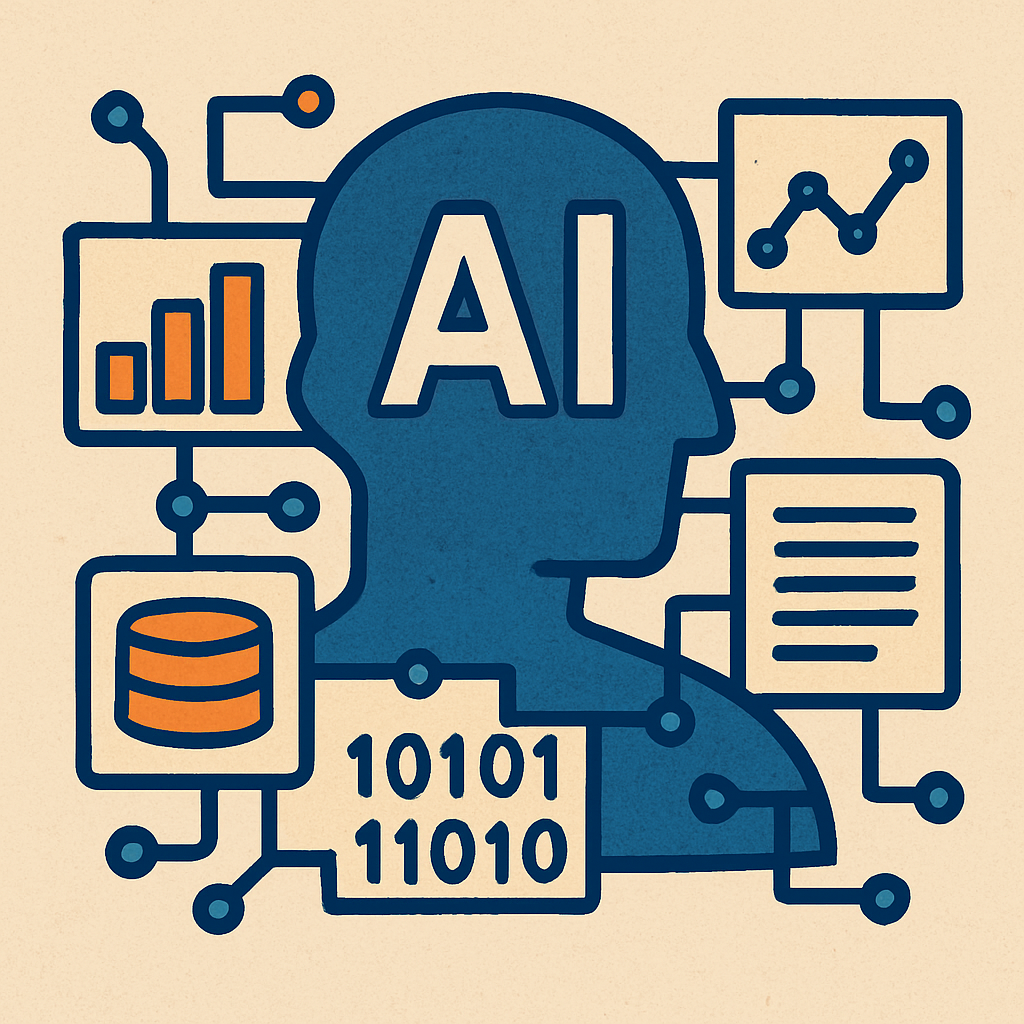
Choosing wisely will ensure your journey into AI is both successful and rewarding.

